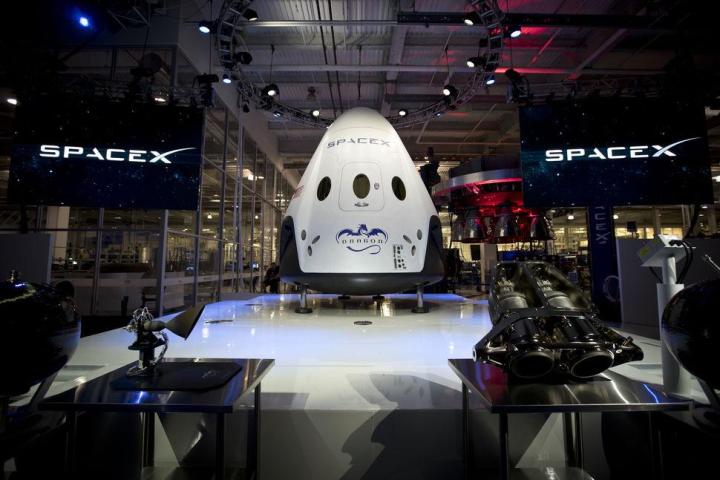
SpaceX founder and CEO Elon Musk has unveiled the Dragon V2, a spacecraft he hopes will one day take astronauts to and from the International Space Station (ISS).
At a special event at the company’s Hawthorne, California factory on Thursday, Musk took the wraps off an updated version of the existing Dragon spacecraft, which up to now has made four trips to the ISS, delivering vital supplies for crew members.
While the Dragon craft has never taken humans into space, the V2 capsule, which is set to become part of a new generation of spacecraft when it goes into service, can carry up to seven astronauts “for several days.”
Musk promises the new spacecraft, which could go into service as early as 2016, will have far superior landing capabilities to its predecessor, able to put down “anywhere on land with the accuracy of a helicopter.”
The Dragon’s parachutes will remain with the V2, but will only deploy if there’s a problem with the engines or propulsion system prior to landing.

It can also dock with the space station autonomously, without the aid of the ISS’s arm, an improvement over the Dragon that Musk described as a “significant upgrade.”
The V2’s design allows for rapid reuse of the spacecraft, something the SpaceX boss said was vital for revolutionizing access to space.
“So long as we continue to throw away rockets and spacecraft, we’ll never have true access to space; it’ll always be incredibly expensive,” Musk said.
The presentation gave attendees an up-close look at some of the V2’s components, including its new SuperDraco engines. Whereas each of the Dragon’s Draco engines produces about 100 pounds of thrust, a SuperDraco engine is capable of producing 16,000 pounds of thrust, “hence the ‘super,’” Musk quipped. In addition, the SuperDraco will be the first “fully printed” engine, making it the first such engine to see flight.
The SpaceX team believes its latest spacecraft design is another step forward to bringing down the cost of space flight as it vies for NASA development funds and contracts.
You can check out Musk’s 15-minute presentation below.
Editors' Recommendations
- SpaceX’s Falcon 9 rocket just completed a milestone mission
- Watch SpaceX blast its megarocket engines in spectacular test
- Take a high-speed ride on SpaceX’s emergency escape chute
- How to watch SpaceX Crew-7 return to Earth this week
- SpaceX boss Elon Musk predicts date of next Starship test flight


